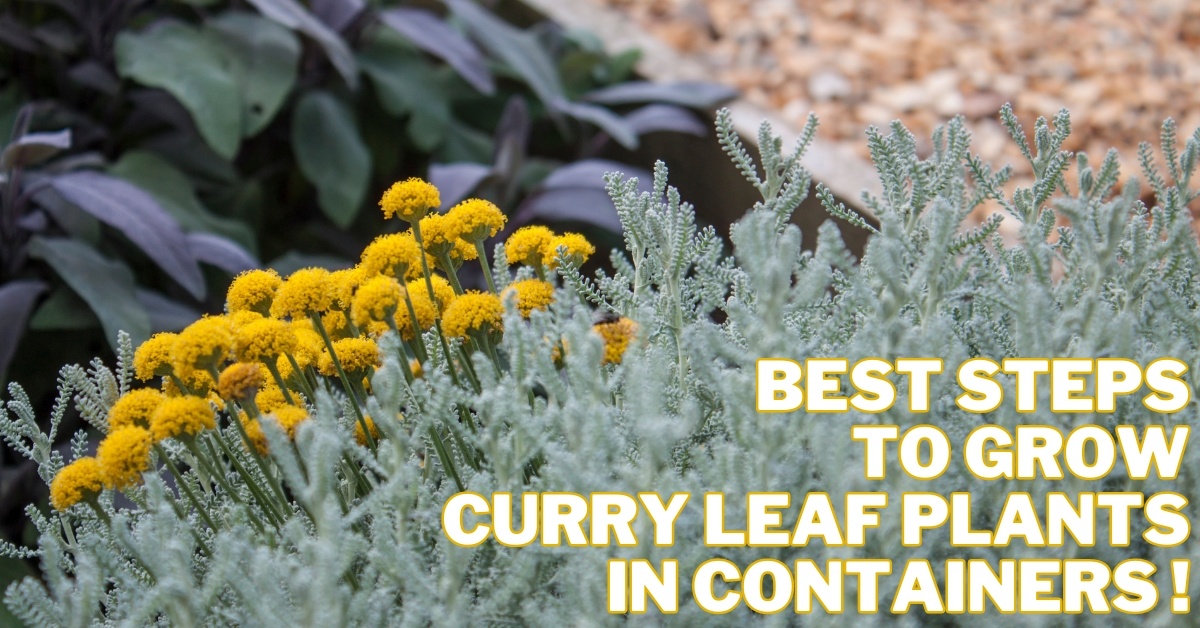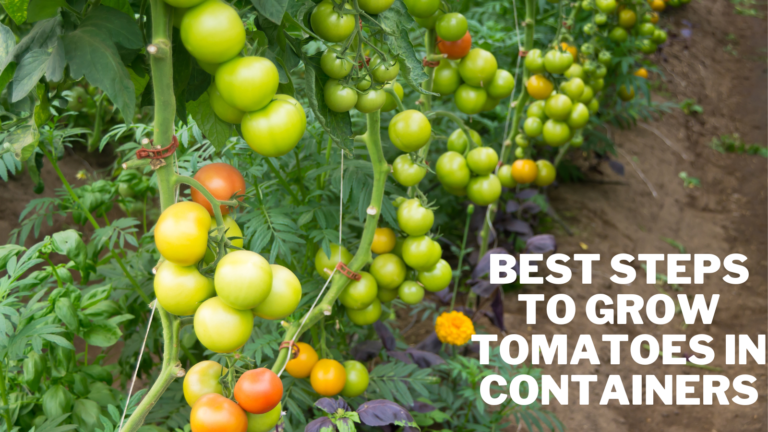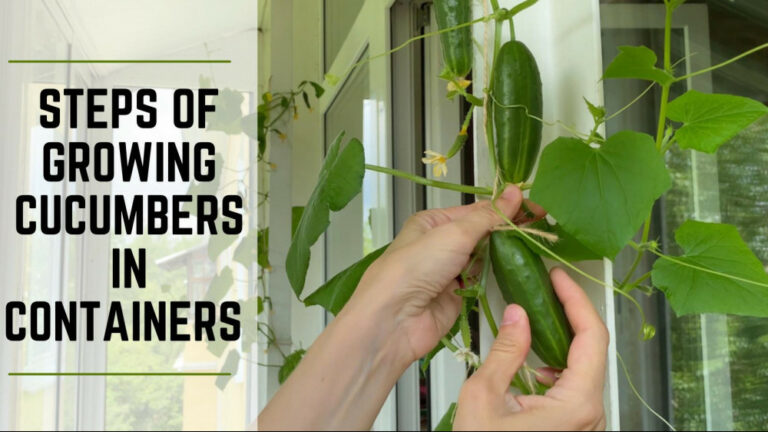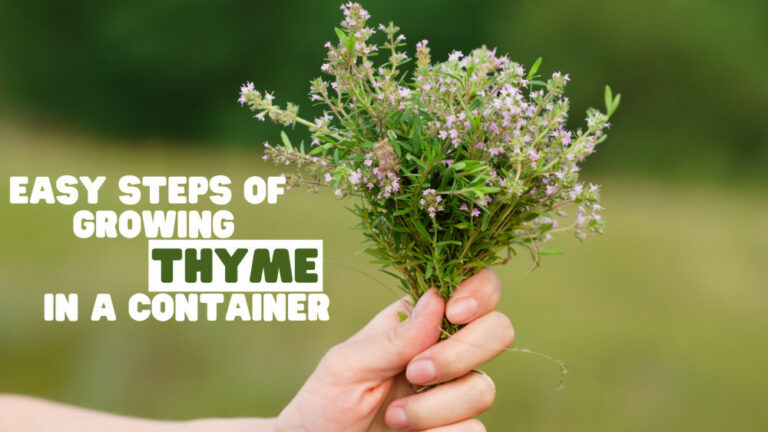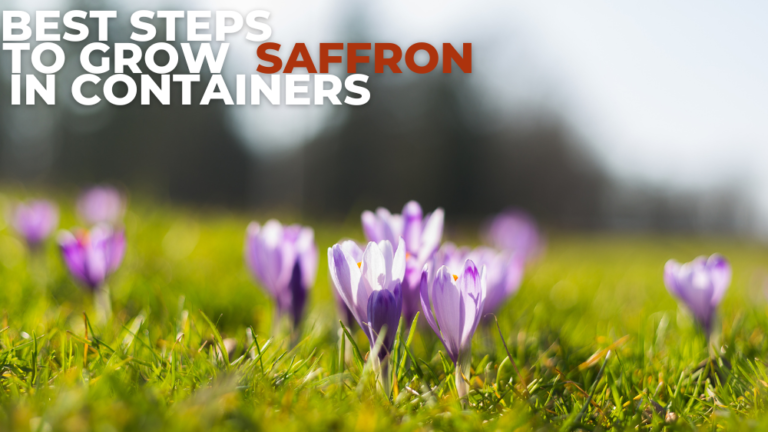Best Steps To Grow Curry Leaf Plants In Containers
Best Steps To Grow Curry Leaf Plants In Containers
Curry leaf plants thrive in any climate. Due to their incredible flavour and perfume, curry leaves are one of the most well-liked spices in the world.
Curry leaves are usually used in recipes worldwide, mainly in India. Fresh curry leaves make dishes taste better.
While you may buy curry leaves and powders on the market, the curry leaf plants that grow in your home have a terrific flavour.
This article will explain how to grow curry leaf plants in containers.

History & Origin Of Curry Leaf Plants
Curry leaves have a documented history from the first to the fourth centuries AD. It was updated as the word “kari” used in Tamil and Kannada literature.
Curry, a term now frequently used to refer to Murraya koenigii, is derived from the Tamil word Kari, which means “spiced sauce.”
The usage of Murraya koenigii as a vegetable flavouring ingredient is mentioned in early Tamil and Kannada literature.
Murraya koenigii is now cultivated in India, Sri Lanka, Southeast Asia, Australia, the Pacific Islands, and Africa as a culinary flavouring agent.
Although Murraya koenigii is commonly farmed in Southeast Asia, some regions of the United States, and Australia, it is native to the east and south of India, Pakistan, Sri Lanka, China, and Hainan.
It can grow in the Andaman Islands and all of India up to 1500 to 1655 meters above sea level. In humid forests between 500 and 1600 meters above sea level, such as those in Guangdong, Shainan, S Yunnan (Xishuangbanna), Bhutan, Laos, Nepal, Pakistan, Sri Lanka, Thailand, and Vietnam, it is also grown.
Curry leaves travelled to Malaysia, South Africa, and Reunion Island with South Indian immigration.
Only two of the 14 species in the genus Murraya that are known to exist worldwide—Murraya koenigii (Spreng) and Murraya paniculata—can be found in India (Jack).
Tolerant of both full sun and little shade. South and East Asia to Australia are the distribution centers for Murraya koenigii.
The flavourful leaves kick the food. In Ayurvedic medicine, Murraya koenigii leaves are also used as a herb.
Their benefits as anti-diabetic, antioxidant, antibacterial, anti-inflammatory, hepatoprotective, and anti-hypercholesterolemic agents are numerous.
Curry leaves, also known as karipatta, have a reputation for promoting healthy, long hair. They also have iron in them.
These leaves are often used in Southeast Asian cooking and give a variety of foods a very distinctive flavour and scent.
Before adding additional ingredients, curry leaves are traditionally cooked in oil in the cooking pan.
The curry leaves produce volatile smells and fragrances as they fry, infusing the food cooked in the pan.
There are still leaves in the pan. Curry tree leaves are typically utilized either fresh or dried. They can be eaten or set aside during meals and kept in the pan while the food is being cooked.
Types Of Curry Leaf Plants
Curry leaf plants come in three different varieties, the main difference being size. The largest of the three types, the curry leaf tree, may reach a height of 15 feet and is the usual source of the leaves found in grocery stores.
You should know the best varieties to grow curry leaf plants perfectly in containers.

1. Dwarf Curry Leaf Plant
Due to their flavour and perfume, curry leaf plant leaves are utilized in many Indian recipes. The leaves can be chopped before being added to meals and used fresh or dry.
The Rutaceae family also contains citrus plants. The curry leaf plant comprises several species. The plant thrives in full light and well-drained soil. It can withstand little shade, but excessive shade will make the leaves tasteless.
Once they are established, curry leaf plants are comparatively drought tolerant. Cuttings or seeds can be used to grow curry leaf plants.
It's crucial to utilize fresh seeds that haven't been allowed to dry out when growing plants from seeds.

2. Gamthi Curry Leaf Plant
The small seeds of the curry leaf plant are known as gamthi. The plant is indigenous to Sri Lanka and India and is frequently used in Indian cooking.
Bay and curry leaves both have a strong, distinctive flavour. They also have a slight sweetness, though. How are they used?
The seeds of the Gamthi curry leaf plant can be pulverized or utilized whole. If you're using them whole, add them to your dish in the last few minutes of cooking to avoid burning them.
You can incorporate them into the cooking process if you crush them up. Remember that the more refined they are, the stronger their flavour will be.
So, choose a coarse grind if you prefer a milder flavour. Additionally, choose a fine grind if you want something with a little more kick.
Which dishes do they complement well? Gamthi curry leaf plant seeds, because of their potent flavour, function best in meals that will be cooked for a long time.
This makes them ideal for braises, stews, and other slow-cooked meals like curries. They can also be added to give soups and stocks a flavour boost. Just watch your additions—a little goes a long way!

3. Organic Curry Leaf Plants
Organic curry leaf plants offer many health advantages and are a great source of antioxidants.
They can be used in cooking to give your meals more flavour and nutrition. Curry leaves have a reputation for enhancing digestion and metabolism.
The Murraya koenigii tree, indigenous to Sri Lanka and India, produces curry leaves. The leaves are frequently used in curries and other Indian recipes because of their potent flavour.
Due to their therapeutic qualities, curry leaves are crucial to many Ayurvedic medications. Organic curry leaf plants are not developed using chemicals or pesticides.
This helps protect the environment while making it safer for you to consume. Make sure to purchase fresh curry leaves when purchasing organic curry.
Brown or yellow leaves should be avoided, as they may be old and past their prime. Organic curry leaves, fresh or dried, are an excellent addition to your diet.
So feel free to incorporate their flavour and advantages into your favorite foods!

Health Benefits Of Curry Leaf Plants
1. Powerful Antioxidant
Curry leaves contain many plant substances that are potent antioxidants. These substances maintain our health and shield us from many ailments.
They protect us against oxidative damage and conditions affecting the kidneys, brain, cardiovascular system, and more.
2. Reduced Risk Of Cancer
Curry leaves have the potential to be antimutagenic. They defend our bodies against various malignancies.
Curry leaves contain flavonoids that have anti-cancer properties. They successfully impede the development of breast cancer cells. Curry leaves also guard against colon cancer and help prevent cervical cancer.
3. Reduced Risk Of Heart Diseases
Curry leaves shield our hearts from oxidative harm. Curry leaf consumption also lowers cholesterol levels.
Additionally, it lowers triglyceride levels. Thus, reducing our risk factors aids in preventing heart ailments.
4. Help Deal With Stomach Ailments
Curry leaves are an effective remedy for diarrhea and constipation. Carbazoles, an alkaloid found in curry leaves, help control diarrhea.
You can eat curry leaves either raw or cooked. The juice from the leaves can also be ingested. Additionally, curry leaves have mild laxative characteristics that aid in treating indigestion and constipation issues.
5. Neuroprotective Effects
Curry leaf consumption was observed to boost brain-protecting antioxidants. They were also discovered to be helpful in Alzheimer's disease by preventing oxidative damage to the neurons.
Curry leaves have also been reported to be helpful for amnesia (memory loss), frequently seen in the elderly due to aging.
6. Management Of Diabetes
Curry leaf consumption aids in the treatment of diabetes and its associated issues. It has been shown to decrease blood glucose levels significantly.
Curry leaves are full of fibre, slows digestion and keeps blood sugar levels from rising suddenly. They also increase insulin's action, which benefits diabetic patients even more.
The Diabetes Food Chart can help you locate other foods to incorporate into your diabetic diet plan.

Grow Curry Leaf Plants In Containers
Curry leaves are a staple in Indian cooking and are prized for their distinct flavour, reminiscent of cumin, menthol, and herbs.
Antioxidants and blood sugar stabilization are also claimed to be benefits of the leaves. Curry leaf plants can be grown in your yard for your use, although you can always purchase them online or at Indian grocery stores.
To start growing curry leaf plants, you need only some seeds, potting soil, and a tiny container. You can pick the leaves as your plant grows and use them in your recipes!
1. Choose The Right Container For Curry Leaf Plants
Containers work better for cultivating curry leaf plants than gardens. Most Curry leaf seedlings and cuttings grow more quickly and flourish when planted in pots.
Additionally, growing curry leaves in pots enables you to adjust the plant's position to accommodate growth.
Remember to select a deep, wide container; otherwise, after the herbs expand, you must transplant them into larger containers.
When it is 10 years old, this plant will require at least a 30-gallon container. Curry Leaf Plants can be grown in virtually any ceramic, resin, or terracotta-coloured plastic container.
Regardless of the material, ensure the container has sufficient drainage holes on the bottom.
It's crucial to choose the proper-sized container for the curry leaf plant. A large container is not necessary for a tiny curry leaf plant.
2. Soil To Grow Curry Leaf Plants In Containers
Curry Leaf Plants prefer loose, well-drained soil that is slightly acidic (soil PH between 5.6 and 6). After watering, the access water must drain away from the drainage hole beneath the pot to prevent the roots from rotting.
The curry leaf plant can be planted in any potting soil sold in big-box stores. Ensure you purchase “Potting Mix” and not “Potting Soil.”
Add ½ cup of compost or cow manure to the potting soil for optimum growth. Before planting the curry leaf plant, thoroughly combine the potting soil with cow dung.
Numerous germs, parasites, and insects found in garden soil have the potential to injure or infect your curry leaf plant.
Additionally, you don't want to introduce outside pests that could contaminate other indoor plants when you bring the pot home during winter.

3. Planting Curry Leaf Plants
Step 1
Compost and potting soil together should be placed in a tiny container. To start your curry leaf plant, look for a little pot that is 3-4 inches (7.6-10.2 cm) wide and 4-6 inches (10-15 cm) tall.
To ensure that your plant receives enough nutrients as it grows, use a potting mixture that is 60% potting soil and 40% compost. Mix the dirt and compost entirely until they are well combined.
To be sure it doesn't contain harmful bacteria, use potting soil from the shop rather than soil from your garden.
If you reside in a climate zone 9–12 region or if the outside temperature doesn't drop below 32°F (0°C), you can plant your curry leaf plant directly in the ground. You must ensure that the soil contains the proper nutrients and adjust it.
If you wish to grow more than one curry leaf plant, prepare several pots for each extra plant you wish to cultivate.
Step 2
Plant a curry leaf seed 1.3 cm (½ inch) deep into the potting soil. Press your thumb into the middle of the seed to make a ½ inch (1.3 cm) deep hole in the earth.
Put a single curry leaf plant seed into the hole you created, press the potting mix against it, and slightly compact it after pushing part back into the hole to cover the seed.
Curry leaf plant seeds are available online or at Indian grocery stores. To increase the likelihood of your seeds sprouting, get the freshest ones you can.
Step 3
Thoroughly water the soil until you see the soil emerging from the drainage holes. Use a watering can to moisten the soil after you've planted the seed so the roots may begin to grow.
Wait for the soil to absorb the water if it is sitting on top of the soil before adding more. Stop watering the plant as soon as the drainage holes at the bottom of the pot begin to fill with water.
The soil will soak up any water that leaks out of the bottom of the pot and keep it inside a shallow container.
Don't overwater the seeds, as they might not sprout or grow properly if you do.
Step 4
Place the pot in a location with at least six hours of direct sunlight daily. After watering your seeds, place them close to a south-facing window so they can receive sunlight all day.
You can leave the container outside for the plant to grow if the temperature is higher than 32°F (0°C).
Ensure the plant receives 6 to 8 hours of direct sunlight daily; otherwise, it won't grow robust shoots or leaves.
You might notice your curry leaf plants emerging from the ground after around 7 days.
Keep your plant outside during the day and bring it inside at night if it doesn't get below 32°F (0°C) until the evening so it doesn't freeze.

4. Grow Curry Leaf Plants From Seeds
Curry leaf trees can be multiplied via seed, but you should know that it takes time. It may take two years for your plant to be well-established enough for you to begin routine leaf harvesting.
Choose fresh, dried seeds for the most significant possibility of germination. Older seeds are difficult to germinate.
Rub the seeds, which are the berry pits, between your palms to remove the tough outer shells. If that doesn't work, put the seeds in a plastic bag.
To remove the seed from fresh berries, soak them in water for 24 hours. After soaking, you can carefully rub off the skin and pulp surrounding the seed.
Sow seeds in moist potting soil and a third of an inch deep if you want to start them inside. To effectively create a miniature greenhouse, cover the container with plastic wrap with holes punched to retain moisture. Use a heating pad if necessary because seeds need soil at least 68°F to germinate.
Given these seeds' low germination rate, try sowing many seeds per tray cell to increase your chances of growing a strong plant. When the seedlings appear, thin them as necessary to one seedling per cell.
When the daytime temperature is regularly over 65°F outside, direct sow plants of the same size should be spaced equally apart or four to five feet away from structures.
Keep the soil moist until the seedlings emerge, which should take two to three weeks. When your curry leaf plant is about six months old, it's time to begin pruning.
Pinch back or prune two branches to promote bushier growth once a healthy seedling has established six or more branches with numerous mature leaves on each.
Instead of growing spindly and tall, the plant must be encouraged to become bushy with plenty of offshoots.

5. Grow Curry Leaf Plants From Cuttings
In the spring, cut a three- to six-inch section of stem from a mature, healthy plant with at least three sets of leaves.
After trimming the branch as closely as possible to the main stem, cut the branch's base at a 45° angle.
Remove the lowest set of leaves, then cover the base with powdered rooting hormone. The soilless potting mix should be put in a container.
Any container that size will do. If you need containers, consider purchasing some CowPots from Arbico Organics.
They come from a renewable resource and are biodegradable (cow poop). Make a hole in the potting mix and place the stem's cut end inside.
Bury it one inch deep. Choose a location with at least six hours of indirect sunlight each day for the container. Keep the potting soil damp until the roots take hold, and spray the cuttings daily.
When you can gently tug on the plant, and it resists, usually after about three weeks, you'll know it's ready to transplant.
At that point, as long as nighttime temps are over 40°F, you can harden it off outside. If you want to transplant your curry leaf tree outside because the weather is warm enough, first harden off your roots by gradually exposing them to outdoor light and wind.
Give the plant one hour of sun on the first day. Increase your time spent outside the next day to two hours. Give on the third day.
Give it three hours on the third day, and so on. After a week, it is prepared to move into its permanent home, whether in the ground or a container outside.
At maturity, typical plants have a spread of four to eight feet and a height of six to fifteen feet. They should be placed four to five feet apart, with the same distance between them and any other plants or buildings.
Choose a location that receives at least five hours of direct sunshine daily if you plan to keep your plant indoors.
But wait a moment before placing it there. Over about a week, gradually acclimate it to direct light by exposing it to two hours on day one, one hour on day two, and so forth.
To adapt your cutting to these bright conditions, gradually expose it to direct light over roughly a week, giving it an hour of direct light on the first day, two hours on the second day, and so on.
6. Light To Grow Curry Leaf Plants
Curry leaf plants thrive in full sun. Place them in the area of your garden that receives the most sunlight for optimal results. The tree will produce healthy foliage if given the right lighting and maintenance.
7. Temperature And Humidity To Grow Curry Leaf Plants
Curry Leaf Plants are sensitive to the cold. It can withstand a light frost, but it struggles in regions with consistently harsh winters, which will cause it to lose its leaves and hibernate until spring. It does well in a hot, muggy environment.
8. Watering Requirements For Curry Leaf Plants
Between watering, let the plant dry out. Warm water feeding is beneficial for curry leaf plants. Reduce watering over the winter when the plant is dormant to avoid root rot.
An excellent cure for this is to irrigate the plants with fermented rice water. After diluting it with twice as much regular water, spray the fermented rice on the plant leaves to eliminate the bugs. The rice water then assists the growth of sensitive leaves.
Keep water from collecting beneath the curry leaf plants. Although the plant needs enough hydration, if water collects at the bottom, it could cause the roots to rot.
The entire plant might be destroyed as a result. To stop the Curry Leaf Plants from rotting, scatter some ash beneath it.
To stop the curry leaf plants from rotting and their leaves from turning brown, scatter some ashes beneath the plant. This will also boost the curry leaf plants’ vitality.

9. Fertilizer To Grow Curry Leaf Plants
Since we have already combined a decent amount of compost in the hole, feed your curry leaf plants any other organic fertilizer high in nitrogen on a 15-day cycle to promote leaf growth.
Regular applications of fertilizers with greater nitrogen (N) content are beneficial to curry leaf plants.
In the springtime, one blood meal is applied every month, followed by seaweed or fish fertilizer applications.
Curry Leaf Plants also benefit from the weekly application of natural fertilizers created at home, such as buttermilk, rice water, asafoetida, and eggshells.
10. Propagation Of Curry Leaf Plants
Plants could be available in your neighbourhood nursery or Asian market. Online stores sell both seeds and plants.M. koenigii is normally propagated by rooted cuttings, but if you're persistent, you might try growing it from seed.
11. Pests & Diseases Of Curry Leaf Plants
Young plants are immensely appealing to aphids. On the foliage, you'll see clusters of minuscule, wingless insects that are yellow, brown, pink, black, gray, or green.
They can spread disease and suck the juices out of your plant. They leave behind a sticky fluid called honeydew that can result in sooty mould and damage that can cause leaves to curl and turn yellow.
Sending plants under a cold water blast is the first line of defence. Sometimes, all that is required is to knock them loose so they will go onto other plants.
Try flour-dusting your plant if that doesn't work. If an infestation becomes particularly serious, consider applying neem oil once a week until the pests are eliminated.
Spider mites can also harm plants. Although these tiny spiders are difficult to spot, you will probably notice the web they leave behind.
They can result in yellowing or necrotic areas as they feed on plants by piercing them and sucking away their fluids. Additionally, they can spread disease. Like the curry leaf plant, they favour hot temperatures.
Spraying plants with cold water to knock them off their perches will help eliminate this problem. Perform this each day for a week.
If that doesn't work, introduce beneficial insects like ladybugs and lacewings to your garden. It's time to pull out the big guns if that doesn't work. To get rid of them, apply neem oil or insecticidal soap.
Spray your plants with soap or oil as the manufacturer directs thrice weekly for two weeks. Like mites and aphids, psyllids also sap from plants.
If left to feast for an extended period, the leaves on your curry leaf plant will eventually turn yellow and die.
This reddish-brown beetle is about a tenth of an inch long. It can fly and make long jumps. Nymphs resemble scale, another prevalent plant pest.
Populations can be regulated by beneficial insects like ladybugs and lacewings, as well as by regularly using neem oil, as previously mentioned.
Diatomaceous earth can also be sprinkled on and around your plants.

12. Harvesting Of Curry Leaves
The plant should be fully productive by year five, regardless of size. The harvest will steadily increase each year from the first through fourth years.
In two years, standard cultivars should reach a height of around six feet, at which point you may start routinely harvesting.
Dwarf and miniature (gamthi) kinds can take up to five years to attain a size that can be harvested, around half its mature height.
If you require more leaves, pluck them. Alternately, you might harvest more heavily twice or three times a year.
During the growing season, the second method entails pruning branches every two months. Cut back the branches with shears or pruners.
At the base of each branch, leave a few inches. Don't be afraid to harvest. It encourages bushier growth, enabling you to pick leaves regularly.
New growth will continue to emerge and replace what you've removed as long as you don't remove more than half of the leaves at once.

13. Preserving Curry Leaves
Fresh leaves can be kept in a sealed bag in the fridge for two weeks. Wait until right before using them to wash them.
The leaves can also be frozen; however, doing so will cause them to lose colour and flavour. To clean and dry the leaves, cut off the stems. Vegetable oil should be used to cover the leaves lightly.
You can also dry the leaves if you have a particularly abundant harvest. However, they will taste less flavourful than when they're fresh.
Put the leaves in a single layer on a screen and keep them there until they are crisp and dry in a covered area with sufficient airflow.
The curry leaves can also be put in a food dehydrator. They can last up to a year in a sealed container in a cool, dark location.

Conclusion
Curry leaves are a necessary component in Indian cooking because they give food a ton of flavour and aroma. However, many people lament that they cannot grow fresh curry leaves because of space restrictions, particularly in apartments.
I trust you enjoyed this article on the Best Steps To Grow Curry Leaf Plants In Containers. Please stay tuned for more blog posts soon. Take care!
JeannetteZ
>>>Please click here to read my all-inclusive article about Container Gardening<<<
>>>Are you interested in homegrown herbs and medicine? Please click here to find out more about it!<<<
Your Opinion Is Important To Me
Do you have thoughts, ideas, or questions? I would love to hear from you. Please leave me your questions, experiences, and remarks about this article on the Best Steps To Grow Curry Leaf Plants In Containers in the comments section below. You can also email me at Jeannette@Close-To-Nature.org.
Disclosure
This post may contain affiliate links. I earn from qualifying purchases as an Amazon Associate and other affiliate programs. Please read my full affiliate disclosure.
You might also enjoy these blog posts:
Best Steps To Grow Viola In Containers
Best Steps To Grow Parsnips In Containers
Best Steps To Grow Black-Eyed Susan In Containers
Best Steps To Grow Globe Amaranth In Containers
Best Steps To Grow Strawflowers In Containers

